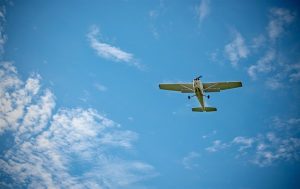
Whether you’re a seasoned pilot or a once-a-year air traveler, you’ve probably heard of the “final approach.” It’s a term used extensively in the aviation industry. All flights have a final approach. What is the final approach in aviation, and what does it involve?
The Final Approach Explained
In aviation, the final approach is the last segment or leg of an airplane’s flight path. It’s the moment when pilots focus on a single goal: to align the airplane with the runway. During the final approach, pilots will slow and descend the airplane to a lower altitude while simultaneously aligning the airplane with the centerline stripe of the runway.
What Happens During the Final Approach?
As the name suggests, the final approach is the culmination of an airplane’s flight path. After the airplane intercepts the approach course, it moves to a straight line toward the runway. From here, pilots will typically follow a glide path down to the runway.
The glide path is the angle at which an airplane descends and approaches the runway. A 3-degree glide path angle is commonly used, but some pilots may use a 4.5-degree glide path angle to compensate for obstacles like nearby buildings or mountains. Regardless, pilots will maintain this angle during the final approach so that they can safely touch down and land the airplane.
It’s important to note that the final approach can be visual or with instruments. Visual flight rules allow pilots to use runway lights and landscape/terrain references to align the airplane with the runway. Instrument flight rules, on the other hand, allow pilots to leverage onboard flight instruments like an Instrument Landing System (ILS) to guide the airplane to the runway. Instrument-based final approaches are more precise, but not all airplanes are equipped with the necessary flight instruments.
The Importance of the Final Approach
The final approach is arguably one of the most important stages of flight. Most modern airplanes have autopilot. After taking off and achieving cruising speed, pilots can enable autopilot to automate many flight-related tasks. The final approach, though, is typically performed manually for safety purposes.
Pilots must carefully monitor and adjust factors such as the airplane’s speed, glide path, alignment with the runway and descent rate. If any of these factors are off, they may struggle to safely land the airplane. In cases such as this, pilots may perform a go-around. Rather than attempting to land the airplane, they will circle the runway. After performing this go-around, pilots will then attempt to land the airplane.



